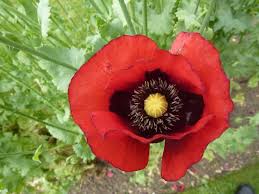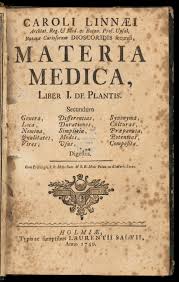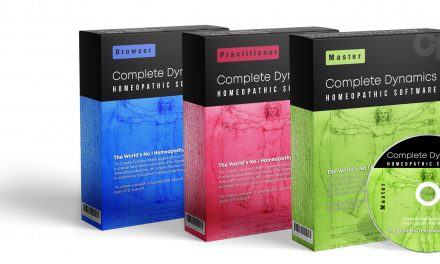By Dr. Mabelle Park, Seattle, Wash

I think I might apologize for taking as my subject a question so generally understood, yet so generally neglected, so serious in its nature when it is neglected, a fountain head of trouble that radiates in so many directions and is inductive of so many other conditions of a pathologic nature and yet the old, old story is always new if some new phase is introduced into it and possibly I may be able to introduce some new thought that may make it worth the while to some one, or, perhaps, the discussion that may be brought out will throw a ray of light on some hitherto dark page of this uninviting subject. (I am quite sure more can be said of the breasts than I shall say in this paper and I shall speak only of the female breast.)
When a girl merges into puberty, we all know the physiologycal change that occurs in the breast; they become suddenly developed, the vascularity is increased and so on I might ennumerate other changes. I merely speak of it to show the close sympathy of the breast with the generative sphere. We should expect an organ so intimate in its relation as to undergo simultaneous morphological changes with the generative sphere to also undergo pathological changes when the generative is out of tune, so to speak, and thus we find it so. Pain in the breast at the catamenial period as early as puberty is not an uncommon symptom and often becomes a troublesome disease which extends to the period of adolescence. This condition often goes hand in hand with a dysmenorrhoea though not always. Such remedies as Puls., Acta, Ignatia, Conium and a few others invite our attention so far as medicine is concerned. Taking up the troubles in sequence, as we might expect to run across them. The next is during the period of gestation, where the glands become active and give us a condition known as galactorrhoea. I do not know the etiology, but I do know that it is a most trouble some condition and if not checked will lead to serious exhaustion and anaemia. It has been my lot to have had three of these cases and in each case the patient was of the blonde type, gave a high leucocyte count, and in one case I found lactose in the urine. My years of observation have been few and possibly there are plenty of men here who have seen many more of these cases and can give more data concerning them. In the three I have spoken of Calc. carb. Remedied the condition. This was exhibited in the thirtieth potency. Passing on, near the period of confinement, if patient is a primapara and the nipples short, they should be stretched out each day during the last month to prevent depressed nipples, a condition attended with some trouble to both child and nurse, as it is difficult for the child to nurse. In case this is not done a nipple shield will have to be worn with an artificial nipple attached. It is also our practice to have the nipples treated with Glycerole of Tannin for the purpose of toughening them. This is also done before confinement. If this is done we will seldom have to treat cracked nipples, which is a most distressing affection and which may be treated with Subnitrate of Bismuth with Castor oil rubbed to a thick cream and applied to the nipple between the periods of nursing. Other methods that are spoken of in text books are to paint the nipple with Chloro-percha or with Iodo-collodian; this is very effective, but not half so effective as the oil and Subnitrate of Bismuth. For cracked nipples you would want to think of such remedies as Arn., Calend., Castor equor., Ham., Phyto., or, in some cases, Agar., Cal., Cal., Carb., Cham., Croton tig., Graph., Lyc., Merc., Phos., Puls., Sepia, Sil., Sulph.
MASTITIS. – A trouble that has its origin in some infection having its focus in the nipple and traversing the milk ducts; it may also be caused by a congested breast, often caused by the hanging down of the breast, or a kinking of the lactiferous duct. Whatever the etiology the first and most reasonable thing to do is to draw the milk as clean as possible from the breast, support the breast so that the ducts are straight, best with a corset cover and cotton, then apply hot compresses of water and phytolacca. Many use witch hazel, or Calendula, or gentle massage from the base of the breast toward the nipple with Glycerine; this is an excellent adjuvant.
Remedies such as these, if selected carefully, are sufficient to handle almost any case: Acon., Bell., Bry., Graph, Hepar, Mentha pip., Phos., Phytol., Sil., Acetic acid, Arum triph., Carbo animalis, Cham., Cistus, Con., Lach., Merc. Sol., Rhus tox., Sul., ver. Vir. And perhaps some more remedies enumerated under sore nipples may be indicated.
We often note times after confinement that the quality of the milk is changed and is injurious to the child or, to say the least, it has no food value to the child; or the milk becomes scanty, or suppressed. So I will give a few of the conditions I have seen in practice. Perhaps the most common and disappointing conditon is where no milk is secreted one of two remedies will usually change this condition and they are agnus castus, or Urtica urens. Perhaps you will have coincidently a condition that may call for Secale.
Milk Scanty – Agnus castus, Asaf., Borax, Puls., and then would follow less likely remedies such as Bry., Cal. Carb., China, Merc. sol. And Phos acid.
Milk acid, bitter, tastes badly, salty, watery, and several other abnormal milk conditins, nearly all respond to Cal. Phos.
Caked breasts, Carbo an., Con., Graph., Sil., Phyto., and Sul. With a sensation as if the breast was on a tension, Merc., Nux vom., Secale and Sepia.
Atrophy of breast, Iod., Nit. Ac. And Sars.
CANCER OF THE BREAST. – Right here much needs to be said, as there are so many conditions that are thought to be cancer that are not, and many that are not are sent to the operating table, that it stands a Homoeopath well in hand to make a very careful differentiation. Three of these cases have fallen under my care this year and all were advised by men of the dominant school to operate.
Now I do not want you to think that I am averse to operating those cases that are without fail a carcinoma or a sarcoma for I do think that operative measures hold such a growth well enough in check that the homoeopathic treatment will often do wonders in clearing them up, but I am averse to operating, then to sit down on the results thus obtained and do no more for the patient, for you will find in about one year that the process will renew itself and then you will find that it is too late, and your patient will go down to death in spite of all. We see this enacted in the dominant school of medicine every day. I do not think that all lumps in the breast are cancer, nor will they ever be, and should they be operated upon, Perhaps fibre adenomaa are the most common of all the tumors of the breast, and they are of a benign character, and I think that a vast majority of the so-called cancer cures that are made by the knife are fibre adenoma, I do not say all. The microscopic appearance is very similar, though not identical if the carcinoma be in the early stages and I doubt if the average microscopist can tell the difference. The clinical symptoms are very different. The character of the pain (and both may have pain of the most intense character) is very different. In fibre adenoma the pains are not of a continuous character and are always worse at the menstrual epoch, while the pains of cancer are always of a burning charater and never let up. The carcinoma are of a stony hardness and are blue and sensitive to the touch, while an adenoma may or may not be sensitive to the touch and re never blue, but are usually hard. In the case of cancer the growth may be slow or neuralgia of the breast is always manifest, while in adenoma the growth is slow with no tendency to break down. In carcinoma there is always a cachexia, while in fibre adenoma there is no cachexia. In carcinoma the veins over the body are tortuous, and are enlarged, and particularly about the chest, while in fibre adenoa they are not. We would searcely expect cancer to occur in patients under the age of 45 (though this is not an invaribale rule), while in fibre adenoma it usually comes on after the age of puberty and more often after lactation. Sarcoma may come and do usually come on early in life. It must be borne in mind that all these conditions are affecting glands and thus there may be swelling in other of the lymphatic glands notably under the arm and that is not a diagnostic sigh. The carcinoma is always present and is of metastic growth, while in the case of fibre adenoma it may, or not be present and is of systemic origin. In carcinoma the blood suffers a change. There is a high leucocyte count with a very high percentage of lymphocytes in the blood. The normal lymphocytes are usually less than 25%, while in cancer the lymphocyte count will go as high as 70%.
The Diazo test of the urine is always diagnostic when you get it, but you will not get it until your have been able to diagnose the condition as carcinoma by other means and long before. That test is of special value when after an operation we might suspect a metastic cancer elsewhere usually of the pleura after the breast has been removed, or after a uterus has been removed we have reason to suspect metastasis of the pelvic glands. I think then it behooves every homeo to look well to the diagnisis of a breast condition before operating, as a scar is always left that gives no end of trouble even in a benign condition. I need give no remedies in carcinoma for you know them perhaps better than I do, but for fibre adenoma you can rely upon the indicated remedy and they are in the class such as Conium, Cal. Fluor., Carbo animalis, Phytol., Cal. Carb., Sil. And Lapis albus.




